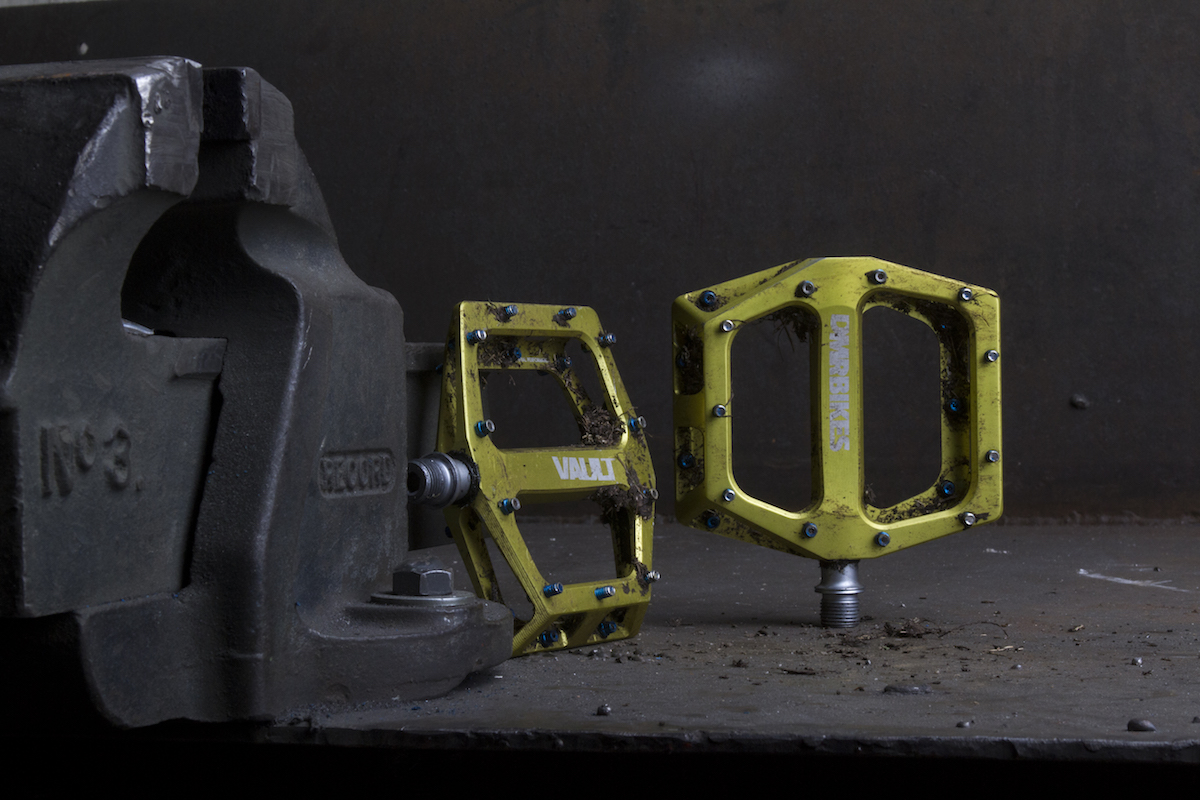In Issue #113 of Singletrack Magazine, we tested 17 different pedals as part of our Flat Pedal Group Test
As part of that group test, we rated all 17 pedals according to several key performance characteristics including grip, platform shape, durability, and ease of service. At the end of the test period, we then presented four separate awards; Best Engineered, Best Grip, Best Budget, and Best Overall.

Winner Of Best Grip: DMR Vault Flat Pedals
If you ask a gaggle of bike journalists to recommend some flat pedals, chances are they’ll say DMR Vaults. That’s because their grip is unparalleled. DMR pioneered high-quality concave pedals around 20 years ago with the V8, originally based around an open mould design, with improved bearings. It has been making refinements ever since; the Vault is DMR’s current flagship pedal.
At 430g they’re an acceptable weight, though not the lightest pedal we have on test. Nor the thinnest at 17mm, but, thanks to that slight extra bulk giving some extra room to scoop out those bowl shapes, boy are they the grippiest. Even stiff-soled, flat pedal-specific shoes settle into their concavity with a luxurious feeling curvature. Some pedals, you have to ride a bit to feel out their characteristics; these, you step onto and can feel the difference right away. The platform area is big, at 105 by 105mm, and might be a little too big for smaller shod riders.
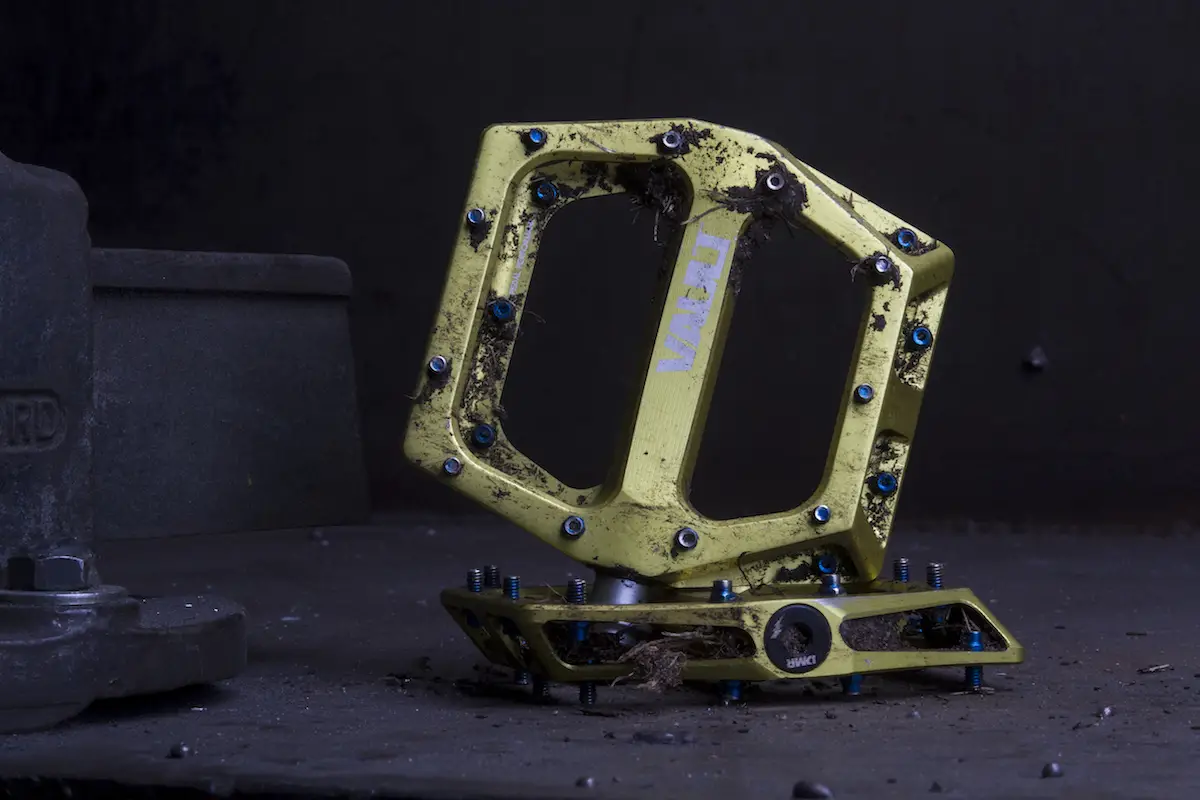
For the aesthetes among us, they’re available in a bewildering array of colour combos with various contrasting or matching pins. We tested the standard aluminium body and cromo axle version, but if you want lighter, you can buy super-fancy magnesium body and titanium axle Vaults for £219.99. They push the weight right down to 290g while keeping exactly the same shape and feel.
The pins are bespoke alloy thru-pins with hex flats. They’re also flippable, with the threaded end sitting prouder of the pedal body, and the head of each a smaller stud, so if you want to tweak the exact level of grip, you can. I expected these to bend or break easily in use, yet they didn’t. I still expect they will at some point, but packs of DMR pins are reasonably priced compared to those of some other manufacturers. Like most flat pedals they also use an M4 thread, so you could experiment with other thru-pins if you really want to.
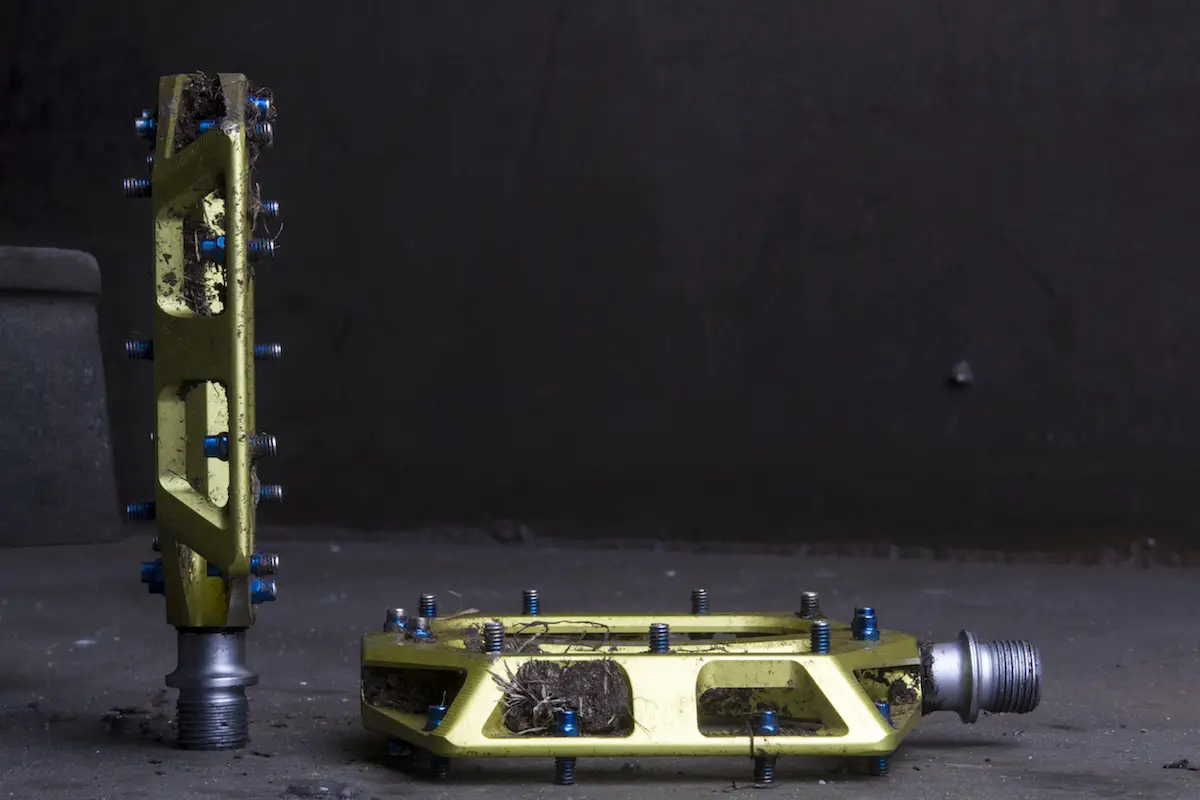
DMR’s cheaper pedals are cast, but the Vault pedal bodies are CNC-milled, and are tough right down to the anodising. In particular, that seemed to shed even the patina of dirt usually left by thin mud and water abnormally well compared to most pedals. I don’t think they have a Teflon topcoat, but they kind of act as if they do. The finish also seemed to survive pedal strikes with minimal scarring.
Inside, they run on a DU bushing at the crank end and a cartridge bearing at the outer end of the axle. If there’s one flaw I’d single out it’s that on these, the initial period where a flat pedal stays right where you left it instead of spinning seems a little shorter than with some other pedals. Not catastrophically so though, and it doesn’t affect them badly. Some of this test was done on a brand new pair, and some on an identical, but three-year-old and never serviced pair Hannah was running. While that pair ran very freely, they still didn’t crunch or have any play in them.
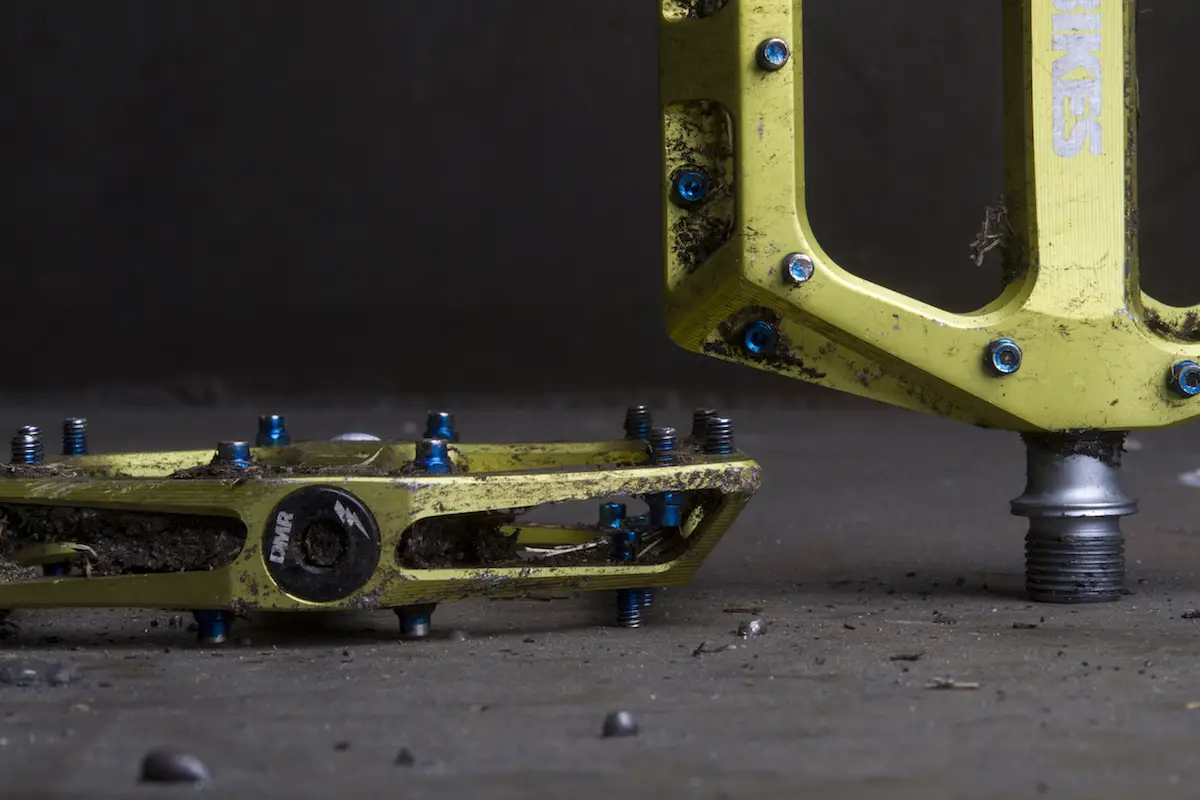
For servicing, DMR sells a special tool (around £15) for removing and installing bushings. North of a hundred pounds, Vaults reach into the kind of price point where you might expect a grease port and maybe an extra bearing or two, but while those things aren’t there, you do only have to take the end caps off to regrease them. They’re not the fanciest pedal innards, but the extra beef they carry compared to the skinniest of skinny pedals means they are at least robust.
Thanks to the bowl shape, I found in use that my feet just naturally slipped into the right position. On flatter pedals I sometimes glance down and find one foot isn’t quite where I think it is. On Vaults, I didn’t even have to look to make sure – you can just feel it.
Combined with sticky shoes, you might find it easy to push Vaults into too-much-grip territory, but as mentioned the pronounced concavity helps with getting foot position right first time as you plant them, and on Vaude/Vibram soles I found the level of grip well within my preferred range.
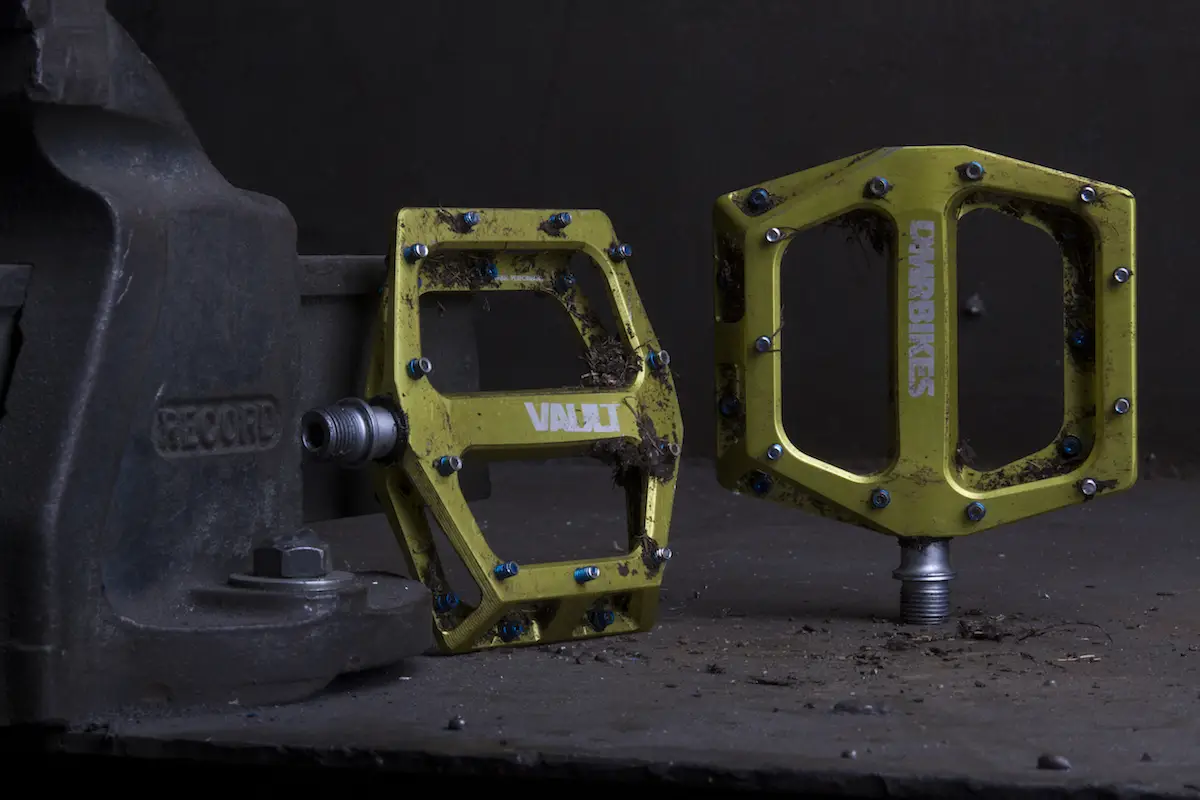
Overall
Robust, with excellent grip and superb finish. You might discern an ever so slight clue as to what kind of riders these are aimed at by the fact they don’t have a Nino Schurter special edition, but there are Brendog and Lacondeguy ones. With such aggressive grip and a weight over 400 grams, these are great for those who live for the descents.

